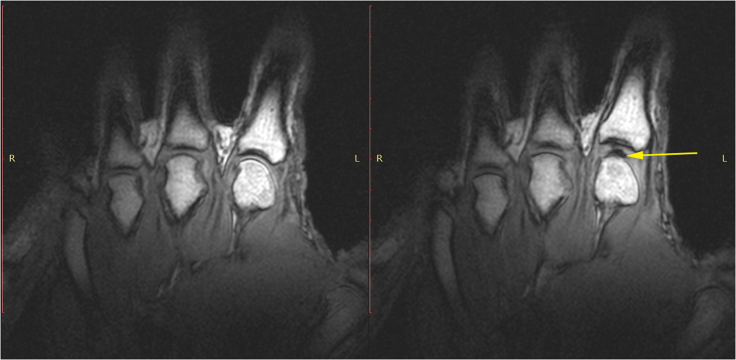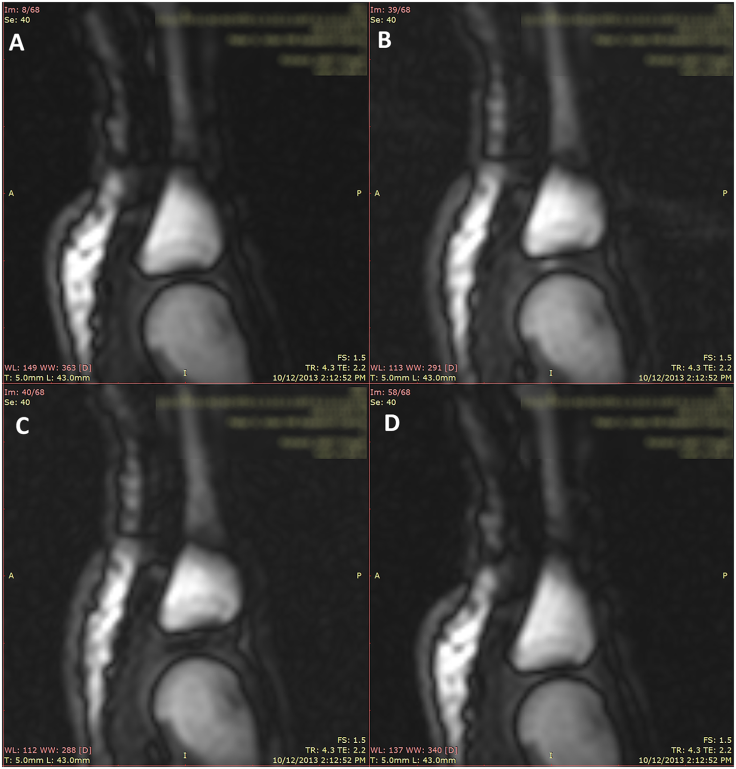Snap, Crackle, Pop: MRI Shows Why Joints Make Knuckle-Cracking Pop Sound

Cracking your knuckles can be an idiosyncrasy or a way to release stress and tension felt in the joints. The crack felt at the base of each knuckle is made as you interlace your fingers and bend them back, but why do they make this cracking sound? According to a recent study published in the journal PLOS ONE, a cavity begins to rapidly form inside our finger joints once they are separated, causing the knuckle-cracking pop sound.
“It’s such a common thing. Some people do it habitually. They love it. Other people find it repulsive. But there’s always been this argument over what actually happens to make the noise,” Greg Kawchuk, professor of rehabilitation medicine at the University of Alberta in Edmonton, told The Guardian.
Kawchuk and his colleagues, including local chiropractor Jerome Fryer, sought to observe the inside of the finger joints in real-time with an MRI video. Fryer originally came to Kawchuk with a new explanation for knuckle cracks, which prompted the study. The chiropractor volunteered to have each of his 10 fingers pulled, one by one by inserting them into a tube connected to a cable that slowly pulled the knuckle joint until it cracked. The MRI video captured each crack in real time, which occurred in less than 310 milliseconds.


The findings revealed every knuckle-cracking pop sound heard happened as the joints suddenly separated. The MRI showed the forming of a gas-filled cavity that appeared in the synovial fluid, a slippery substance that lubricates the joints. The cavity comes out of the fluid as the pressure in it drops.
The research team also found the presence of a white flash that appeared right before cracking. Kawchuk and his colleagues suspect that the flash is caused by water suddenly being drawn together just before the joint cracks. "No one has observed it before," said Kawchuk, in the press release.
A similar study published in the Journal of Anatomy in the late 1940s came to a similar conclusion as Kawchuk. The pair of researchers, doctors at St. Thomas’s Hospital in London, tied a cord around volunteers' fingers and had them tug until their joints popped, which required a tension of about 15 pounds to produce the pop sound. The doctors believed the knuckle-cracking noise was produced when the joint surfaces were separated. This led to a drop in pressure in the synovial fluid in the joints and led to the formation of the cavity. It took the finger joint 20 minutes before it could be popped again.
Although the mystery behind the knuckle-cracking pop sound has been solved, Kawchuk and other researchers would like to see what happens in the joint after the pop, and what it could mean for your health with the help of more advanced MRI technology. “The ability to do this can sometimes change in people over time. Maybe we can use it to ascertain the health of their joints. It could give us fresh insights,” Kawchuk said.
Meanwhile, Kawchuk’s finding can potentially be used to help doctors explore the therapeutic benefits or harms of joint cracking. Occasional knuckle cracking is harmless, but the jury is still out on whether frequent joint cracking can cause long-term health problems.
Until then, knuckle-crack on.
Sources: Fryer J, Jaremko JL, Kawchuk GN et al. Real-Time Visualization of Joint Cavitation. PLOS ONE. 2015.
Haines RW, Roston JB. Cracking in the metacarpo-phalangeal joint. Journal of Anatomy. 1947.



























